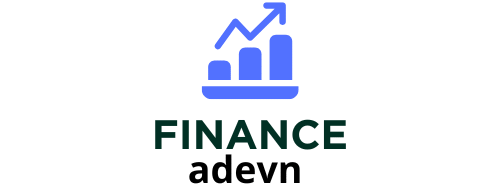High-Yield Savings Accounts vs Stablecoin Savings: now in 2025
Table of Contents
Introduction to Savings Accounts and Stablecoins

In the ever-evolving landscape of personal finance, high-yield savings accounts and stablecoins have emerged as two significant financial instruments. Both options cater to individuals seeking to grow their savings while balancing safety and liquidity, yet they function very differently.
Thank you for reading this post, don't forget to subscribe!A high-yield savings account, typically offered by banks or credit unions, allows depositors to earn a more competitive interest rate compared to traditional savings accounts. Learn more about : Decentralized Credit Scores; The primary goal of these accounts is to provide a secure place for individuals to deposit their money while simultaneously allowing it to grow over time through compounded interest. High-yield accounts are insured by the Federal Deposit Insurance Corporation (FDIC) in the United States, up to certain limits, which adds an additional layer of safety for depositors. With relatively easy access, these accounts serve as an excellent option for individuals looking to save for short- to medium-term financial goals.
On the other hand, stablecoins are a type of cryptocurrency designed to maintain a stable value relative to a fiat currency, such as the US dollar. Unlike traditional cryptocurrencies that often exhibit significant volatility, stablecoins aim to provide price stability by pegging their value to underlying assets. This characteristic makes stablecoins an attractive alternative for investors looking to avoid the risks associated with more volatile digital currencies. In addition to providing stability, stablecoins facilitate quick and inexpensive transactions in the digital economy.
While both high-yield savings accounts and stablecoins offer unique advantages, they cater to different financial needs and risk appetites. Understanding their fundamental characteristics is crucial for individuals contemplating their options for savings and investment in the coming years.
Understanding High-Yield Savings Accounts
High-yield savings accounts have emerged as an attractive financial tool for individuals seeking better returns on their deposits compared to traditional savings accounts. These accounts typically offer significantly higher interest rates, allowing savers to maximize their earnings while maintaining access to their funds. The primary appeal of high-yield savings accounts is the potential to earn interest rates that are often several times higher than the average rates found in standard savings options.
One of the key benefits of high-yield savings accounts is that they are insured by the Federal Deposit Insurance Corporation (FDIC) up to applicable limits. This insurance offers a layer of security, reassuring account holders that their deposits are protected even in the event of a financial institution’s failure. This safety feature is particularly important as it fosters confidence among consumers looking to secure their savings in a reliable manner.
However, it is crucial to recognize that the interest rates on high-yield accounts can fluctuate based on economic conditions, such as changes in monetary policy or alterations in market dynamics. For instance, when the Federal Reserve raises interest rates, financial institutions may increase their high-yield rates to remain competitive. Conversely, lower interest rates may lead to reduced yields for savers. Therefore, account holders should monitor their savings accounts regularly and be aware of market trends that may influence their returns.
Another notable characteristic of high-yield savings accounts is their liquidity and accessibility. Unlike other investment vehicles, these accounts allow for easy access to funds without penalties for withdrawal. This attribute not only serves as a safety net for emergency needs but also offers convenience for individuals who wish to manage their finances actively. In today’s environment, where savings options abound.
Exploring Stablecoin Savings Options

Stablecoin savings options are an increasingly popular choice for individuals seeking to maintain a stable store of value while earning interest on their digital assets. Stablecoins are cryptocurrencies designed to maintain a stable value, typically pegged to traditional fiat currencies such as the US dollar. This stability is achieved through various mechanisms, including collateralization and algorithmic adjustments, which help to minimize volatility compared to other cryptocurrencies.
When utilizing stablecoin savings accounts, users deposit their stablecoins into a financial platform that offers interest-bearing accounts. The interest rates can be significantly higher than those offered by traditional high-yield savings accounts, making stablecoin savings attractive for those looking to grow their assets over time. Some platforms use the deposited stablecoins to provide loans to borrowers or facilitate trading operations, generating returns that are then shared with account holders. This innovative approach allows for a more dynamic way of earning interest while maintaining value.
However, there are inherent risks associated with stablecoin savings. The reliability of the stablecoin itself is paramount; if a stablecoin loses its peg due to poor management or market conditions, the value can fluctuate significantly, resulting in potential losses for investors. Regulatory developments also play a crucial role in defining the landscape for stablecoin usage—governments around the world are increasingly scrutinizing these digital assets, and legislation can impact their accessibility and functionality.
In conclusion, while stablecoin savings options present promising benefits such as higher interest rates and relative stability, they also come with risks that potential users must carefully consider. As the digital currency landscape continues to evolve into 2025, staying informed on technological advancements and regulatory changes will be essential for anyone looking to invest in stablecoins safely.
Safety Considerations: High-Yield Savings Accounts
High-yield savings accounts (HYSAs) offer a compelling option for individuals seeking to maximize their interest earnings while maintaining liquidity. One of the key safety features associated with HYSAs is the protection provided by the Federal Deposit Insurance Corporation (FDIC). Each depositor is insured up to $250,000 per institution, which provides a significant security net. This insurance mitigates the risk of loss in the event of a bank failure, making HYSAs a reliable choice for those prioritizing the safety of their funds.
However, not all banks offering high-yield savings accounts are equally stable. It is crucial for potential account holders to evaluate the financial health of the institution where they intend to deposit their savings. Factors such as the bank’s credit ratings, overall balance sheet strength, and transparency of operations play essential roles in determining the institutional risk associated with the account. Customers should conduct due diligence by reviewing performance metrics and historical stability through credible financial news outlets or regulatory filings.
Economic fluctuations can present challenges to the real yield of high-yield savings accounts, primarily due to the impact of inflation. Even though these accounts may offer attractive nominal interest rates, the actual purchasing power of deposits can diminish when inflation rates outpace these returns. As a result, savers should be mindful of the economic environment and the sustainability of interest rates offered by their chosen financial institution.
Overall, while high-yield savings accounts present a safer alternative to riskier investment vehicles, potential account holders should remain informed about both institutional and economic risks. By carefully considering the choices and performing thorough research, depositors can ensure their savings remain protected.
Safety Considerations: Stablecoin Savings

When evaluating the safety of stablecoin savings, it is essential to understand the unique risks associated with this relatively new financial instrument. One notable risk is market volatility, despite the inherent design of stablecoins to minimize fluctuations. Although stablecoins typically aim to maintain a peg to a particular fiat currency or asset, extraordinary market conditions can lead to temporary dislocations and de-pegging events. Such occurrences pose risks for users who rely on consistent values in stablecoin savings.
Regulatory uncertainty represents another critical safety consideration for stablecoin holders. As governments worldwide assess the implications of digital currencies, they implement varying regulations that can affect the stability and usability of these financial products. Regulatory measures can lead to operational changes that impact how stablecoins are issued, maintained, and redeemed.
Moreover, technology failures cannot be overlooked. Stablecoins are built on blockchain technology, which is generally considered secure. However, vulnerabilities in the software, coding errors, or even smart contract exploits can result in significant financial losses for investors. As users evaluate potential stablecoin savings options, understanding the robustness of the provider’s technology is paramount.
Despite these risks, many stablecoin providers implement rigorous security measures to protect user investments. These measures may include regular audits, third-party evaluations, and collateral backing to ensure that stablecoins maintain their intended value. Furthermore, some providers utilize insurance policies to cover potential losses arising from breaches or hacks. Historical performance can also provide insights, as examining past market behaviors and responses to regulatory changes can help users gauge which stablecoins offer a greater degree of security.
Comparative Analysis of Returns
When evaluating the potential returns of high-yield savings accounts and stablecoin savings, it is essential to consider several key factors, including current interest rates, anticipated inflation, and market volatility that could emerge in 2025. As of 2023, high-yield savings accounts typically offer interest rates ranging from 4% to 5%, depending on the financial institution, and these rates are generally influenced by broader economic conditions set by central banks. In a low inflation environment, the real returns from these accounts can be quite appealing. However, if inflation rises significantly, the purchasing power of interest earned may decline.
On the other hand, stablecoin savings accounts often provide attractive yields, sometimes exceeding those from high-yield savings accounts. This is primarily due to the fact that many stablecoins, especially those tied to popular cryptocurrencies, offer high rates of interest, sometimes in the range of 8% to 12%. However, these yields come with their unique sets of risks, including market fluctuations and the regulatory landscape surrounding cryptocurrencies. Readers must take these factors into account, as the sustainability of returns from stablecoins can be heavily influenced by market demand and trust in the underlying technology.
Moreover, the presence of market volatility poses another layer of complexity. Economic scenarios predicting higher volatility can lead to shifts in investor confidence, which may affect both savings vehicles. While stable-coin savings might yield higher returns, they also come with heightened risks during periods of uncertainty. Thus, investors should weigh their risk tolerance against potential returns when considering these financial products.
In conclusion, the choice between high-yield savings accounts and stable-coin savings hinges on balancing the potential for higher returns against the drawbacks of volatility and inflationary pressures expected in 2025. Each option offers distinct advantages and disadvantages, making it crucial for investors to carefully assess their individual financial situations and risk preferences.
Regulatory Landscape and Its Impact

The regulatory landscape governing high-yield savings accounts and stable-coins is multifaceted and evolving, especially as we move towards 2025. For traditional banks offering high-yield savings accounts, regulations are largely established by federal entities such as the Federal Reserve and the Federal Deposit Insurance Corporation (FDIC). These accounts are typically insured up to $250,000 per depositor, which inherently boosts consumer trust and safety. Compliance with strict capital requirements and consumer protection regulations serves to ensure that these banks operate within a structured framework, thereby providing a layer of security for savers.
In contrast, the regulatory environment for stable-coins is much less defined. While there have been discussions around creating a regulatory framework for digital assets like stable-coins, significant uncertainties remain. Stable-coins, which are digital currencies pegged to a stable asset—most often a fiat currency—are subject to varying degrees of regulation depending on jurisdiction. Some governments are considering implementing frameworks to classify stable-coins as securities or currencies, which would impact their legal standing and consumer protection measures. The lack of uniformity in the regulations can create a volatile environment for users.
As we move toward 2025, the prospect of more decisive regulations on stablecoins appears imminent. Such regulations could establish clearer operational standards, bolster consumer protection, and increase safety measures for users. On the other hand, tightening regulations for traditional banks could lead to lower yields on savings accounts as compliance costs accumulate. Thus, understanding the implications of these regulatory shifts is crucial for consumers seeking safe and reliable savings options. How these regulatory transformations will unfold will ultimately shape the landscape of both high-yield savings accounts and stable-coin savings in the near future.
Future Trends: What to Expect by 2025
As we approach the year 2025, the financial landscape is expected to undergo significant changes that will affect high-yield savings accounts and stable-coin savings. Economic indicators such as interest rates, inflation, and overall economic stability will play a crucial role in shaping these savings options. Central banks are likely to respond to inflationary pressures with monetary policies that can impact interest rates, thus influencing the attractiveness of traditional savings accounts. If rates rise, high-yield savings accounts may offer even better returns, appealing to conservative investors looking for stability in their savings.
Simultaneously, the technological advancements surrounding stable-coins are expected to create a more secure environment for digital assets. Blockchain technology, which underpins stable-coins, continues to evolve, leading to increased transparency and security. By 2025, it is plausible that regulatory frameworks governing stable-coins will have matured, leading to greater consumer confidence in these digital assets. This evolution could enhance the safety of stable-coin savings.
Consumer behavior is also shifting; as experienced through the COVID-19 pandemic, individuals are becoming more comfortable with digital banking and alternative financial products. The millennial and Gen Z demographics, who are more technologically savvy, may gravitate towards stable-coin savings for their digital-first mindset. Institutions may, therefore, need to adapt to appeal to these younger savers, providing user-friendly platforms that integrate traditional and digital savings options seamlessly.
Lastly, the intersection of both savings options will see an increase in hybrid products that leverage the benefits of high-yield interest rates while offering digital conveniences. As we look toward 2025, a multi-faceted savings landscape is anticipated, with increased choices that enhance safety and improve returns for consumers.
Conclusion: Choosing the Right Savings Option for You

Determining the best savings option for your financial situation in 2025 requires careful consideration of various factors, including your personal goals, risk tolerance, and the current market landscape. Both high-yield savings accounts and stable-coin savings offer unique advantages and drawbacks, making it essential to evaluate which choice aligns more closely with your financial aspirations.
High-yield savings accounts typically offer higher interest rates compared to traditional savings accounts, providing an attractive option for those seeking to maximize their savings without significant risk. These accounts are usually FDIC insured, ensuring that your funds are protected up to the allowable limit, which can offer peace of mind during uncertain economic times.
On the other hand, stable-coin savings accounts can also deliver competitive interest rates, often higher than those found in high-yield savings accounts. However, the safety of your funds may be more complex, as stable-coins are subject to the volatility of the cryptocurrency market. Understanding how stable-coins maintain their peg to fiat currencies is crucial, as is considering the regulatory environment affecting crypto investments.
When choosing between these options, consider your immediate financial needs and long-term goals. If your priority is a reliable, stable way of saving with guaranteed returns, a high-yield savings account may be preferable. Conversely, if you have a higher risk tolerance and are looking to potentially earn greater returns while engaging with the cryptocurrency space.
Ultimately, the decision will hinge on a careful assessment of your financial situation, preferences, and future plans. By weighing the pros and cons of each option, you can make an informed choice that suits your needs as you navigate the evolving financial landscape of 2025.
ai accounting budgeting strategies business plan credit cards credit scores cryptocurrency analysis crypto investment crypto staking crypto taxes debt consolidation debt management economic outlook esg stocks executive retirement finance courses finance management fintech app fintech education income streams invest gold lending platforms make money online jobs personal finance personal loans real estate retirement planning retirement plans savings accounts seo optimization stock market tax minimizers tax strategies workspace business
High-Yield Savings Accounts vs Stablecoin Savings: now in 2025
A high-yield savings account, typically offered by banks or credit unions, allows depositors to earn a more competitive interest rate compared to traditional savings accounts. Learn more about : Decentralized Credit Scores; The primary goal of these accounts is to provide a secure place for individuals to deposit their money while simultaneously allowing it to grow over time through compounded interest. High-yield accounts are insured by the Federal Deposit Insurance Corporation (FDIC) in the United States, up to certain limits, which adds an additional layer of safety for depositors. With relatively easy access, these accounts serve as an excellent option for individuals looking to save for short- to medium-term financial goals.

